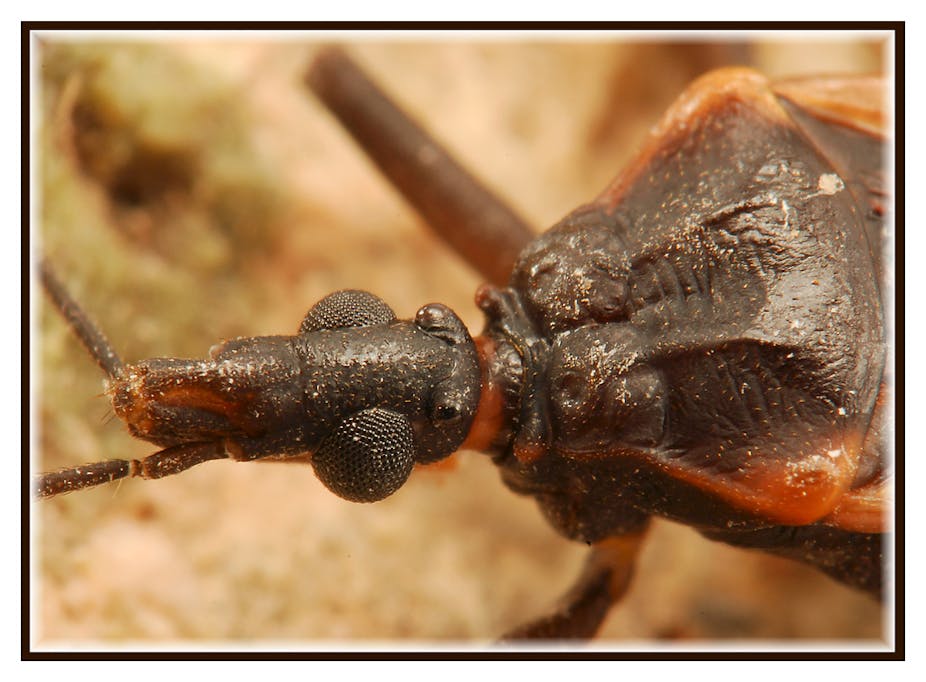Kissing bugs are one of nature’s little vampires. They feed on human blood at night – and spread a nasty infection when they do so.
They are known as “kissing bugs” because of their habit of biting the faces of their victims. The bite is painless but the bug may leave parasites on the victim’s skin. When the victim wakes up, they can become infected if they scratch the site of the bite.
The infection, Chagas disease, is associated with poverty and affects over 8m people across North and South America. The disease is spreading to other continents through human migration. People can also become infected after transfusion or organ transplantation from an infected donor. There are now thought to be more than 100,000 cases in Europe.
The parasite, called Trypsanosoma cruzi, invades the muscles in the heart and gut – and if the disease is not treated early, the victim may die from heart failure in later years. Deaths are relatively rare, but treatment is lengthy, complicated and often has toxic side effects, putting a huge burden on families and medical services. There is no vaccine and the best solution is to kill the bug or stop it from spreading the parasite.
Different tastes
For over a century, it has been thought that kissing bugs only feed on blood. Their blood diet lacks important vitamins, however, and these were thought to be provided by special gut bacteria in the bug. But our work has now shown for the first time that the bugs may in fact have a more varied diet – including plants.
The idea behind this research started one lunchtime while I was eating some sweet cherry tomatoes. My main research is on sand flies, which also feed on blood and plants. It struck me that cherry tomatoes might make a good meal for my sand flies – enabling them to get their “five a day”.

But after chatting with my friend Fernando Genta we decided that if would be fun if he also tried feeding his kissing bugs cherry tomatoes when he got back to his lab at the Oswaldo Cruz Institute, in Rio de Janeiro. Initial results by another colleague Hector Diaz were amazing: it turned out that kissing bugs also love to eat sweet cherry tomatoes. This fun idea then developed into a serious research project involving a big team of 19 scientists. The results in a paper called Everybody Loves Sugar were published in Parasites and Vectors.
Kissing bug “five a day”
We found that the tomatoes physically benefited the bugs, too. Those that fed on sugary tomatoes were healthier, more hydrated, had more energy and were therefore more able to take bigger blood meals. They also lived longer, which is important because if wild bugs that carry the parasite also feed on plants they will be around for longer to spread infection. This “five a day” idea will also help us to keep healthy bugs in the lab for future experiments.

The findings are also significant because some types of kissing bugs like to shelter in palm trees, the açaí berries of which are used to make a tasty local drink in Northern Brazil. In fact, other researchers have found that some cases of Chagas are thought to have started after the victim drank fruit juice contaminated with bugs that had been mashed up in the harvesting process. We now wonder whether these bugs are actually feeding on the palm fruits themselves?
There is no doubt that kissing bugs and the disease they spread are a major health concern in the Americas. Thankfully, cherry tomatoes and a better understanding of the bug’s diet have now enabled us to take one more step towards finding a solution.

